Request from the Plant Doctor!
We now have had almost 3 years of this column and while it is interesting, it is also much too short. When you present your cases, if you can provide more information, the column will become more than just a “clinic for plants.” While it is interesting, far too few of you supply photos and none has an interesting video of their whole plot or habitat. I would like to see these additions. I would love your cooperation to make this the most talked-about column on the entire web.
Here is a list of the things I want to know, so I can give much more interesting answers. If you don’t have all this information, please send what you do have!
- Climate. Are you in tropical, subtropical or temperate circumstances?
- Weather. What type of weather was it in the 2 weeks prior to the problem your plants are facing?
- Soil. What type of soil do you have and what is the pH?
- Fertiliser. What was the last type of fertiliser you applied and for what reason?
- Crop. What crop are you growing, or what type of plant/tree has the problem?
- 6. Stage. What stage is the plant in at the moment? During which stage did the problem became apparent? Stages are : Seedling, Growing, Flowering, Fruitsetting, Ripe.
- Weeds. Weeds tell us about soil pH and structure. What is your most abundant weed?
- Biome/Habitat. Tell us about the trees, plants and animals/insects that live and grow in the neighbourhood.
- Photos/Video. Last but not least, make photos or shoot video! Every modern phone has a camera. Do this before and after, so we can discuss cases on a more ongoing basis. We can discuss which measures have worked and which have not.
Make your story as interesting as possible and I can give you hints on how to manage that whole biome or habitat with minimum fuss and maximum pleasure. I will explain how to become a lazy farmer. I can explain how these different components of a habitat all cooperate to bring about a certain situation. I can also explain how we can manipulate that habitat, so that it functions as we intended it to. We can go from the monoculture image to the multiculture image, all without introducing a single species. It is by using remedies made from these species that we can create a habitat – any habitat.
As the sole alternative to chemical agriculture, we can help this method produce the changes we want to see in the environment. People need to use this knowledge and apply it in their backyards. That is where the changes come from, because seeing it work, will make them demand it for their food.
Send your questions to : [email protected] with the subject “Plant Doctor”.
Dear Dr. Kaviraj,
This year we had downy mildew on our rose plants and it was very destructive. There were purple spots with yellow edges on the top of the leaves and on the stems. There was gray fuzz under the leaves which later fell off. Is there a way to control or prevent this?
Thank you
Lydia Demarco
Hi Lydia
Roses very much like the remedy Sulphur. It protects them against all sorts of problems like blackspot, mildew and other moulds. These problems are most visible when there is a wet spring or summer. Belladonna may at times also work, but it gives no lasting results. In your case I would use Sulphur and water the roots.
Dr. Kaviraj,
Is there a way to prevent orange rust of blackberry? I believe it is caused by a fungus. The plants were stunted and the rusted leaves withered.
Thank you
Michael Tolan
Hi Michael,
Yes, rust is a fungal disease, usually in need of 2 hosts – one for the summer, which has destroyed your plants and one for the winter, so next year that fungus will be back, unless you do something. The best remedy for this problem is Belladonna.
Dear Kaviraj,
I had a problem with the Japanese Beetle which defoliated our plants. The pheromone traps just attracted more to beetles! It ate rose bushes, tomato plants, everything! How do we prevent it?
Many Thanks
Margerie Ross
Hi Margerie,
The Japanese beetle can be controlled by the remedy Syrphinilida or Syrphina larva. These are its natural predators and as a remedy they work just as well.
Dear Kaviraj
Is there a non-toxic way to prevent or deal with apples worms?
Thank you
Joseph Moretti
Hi Joseph,
Yes, there is. The remedy Thuja is about the best to use for that. Just in case that fails, you can also try Ledum palustre.
Dr. Kaviraj,
There was Bacterial Leaf Spot on our basil plants. We had put the plants rather close to each other, hoping to get a larger yield. We had a lot of rain this summer.
Thank you
Chris Livingston
Hi Chris,
Next time, try Dulcamara, which is a remedy especially suited to wet weather conditions. Here is a description.
Dulcamara
Solanum dulcamara. Woody Nightshade. Bitter-sweet. N. O. Solanaceæ. (Not to be confounded with “Deadly Nightshade,” Belladonna, nor with “Climbing Bitter-sweet,” Celastrus.) Tincture prepared from fresh green stems and leaves, gathered just before flowering.
HABITAT
CLINICAL
Waterlogging, damping off, collar rot. Effects of prolonged wet weather. Fungal diseases, such as rust. General problems with photosynthesis, such as discolourations and fungal leaf diseases. Halo spot, rust, blight, mildews. Injuries. Checked eruptions.
GENERAL
The leading indication for the homœopathic use of Dulcamara is found in its modality, “< from cold and damp.” Any condition which has this feature may find its remedy in Dulcamara Dulcamara is a remedy which produces ill effects as from getting drenched. Thus, we see it has symptoms from “wet feet,” such as damping off, collar rot, and waterlogging.
“Sensitiveness to cold and damp runs through the Solanaceæ, and is marked in Belladonna and Caps., but it is supreme in Dulcamara Dulcamara is a scrofulous remedy and has many eruptions: moist or dry, red, tettery eruptions, especially on leaves; furfuraceous,” as in downy mildew. “It corresponds to results of repercussed eruptions.”
(Clarke)
Worse from cold weather, especially in weak plants. It is indicated when the fields remain wet and water remains on the soil after much rain, such as we often see in spring and fall in the northern hemisphere and in monsoon climates, when the rain sometimes does not stop for days on end. At the same time, we see that the plants have a great desire for water, and this may account also for the condition of waterlogging, since in humans dropsical affections are prominent.
It is, like its close similar Rhus tox, also indicated after hot days, followed by cold nights. Such conditions often occur both in spring and fall, when the sun has enough power to make the days warm and pleasant, but which may be followed by night frosts, or at least a significant drop in temperature. Dulcamara will do much to alleviate such symptoms and we can draw this conclusion from the effects it has on humans and animals under similar circumstances.
Since such conditions and circumstances are also promoting fungal diseases, Dulcamara is equally indicated for those effects. It is useful in some forms of rust, Most fungal diseases caused by dampness and waterlogging will be covered by this remedy. Damping off is one of those diseases which affects many seedlings of the Graminae and Leguminosae. It may also be seen in the Brassicaceae and Cucurbitaceae. Of the Solanaceae we may mention the potato and tomato as most prone to diseases from dampness and excess water, of which blight is perhaps the most prominent example.
There are some problems with flowering, especially from the effects of cold weather, which delays the flowering or causes difficulties with the pollination of the plants. In grains and pulses pollination occurs by wind and often in rainy weather wind is absent, which may account for crop losses. In Solanaceae, Brassicaceae and Cucurbitaceae, pollination occurs by either bees and butterflies or is forced by humans, such as in tomatoes and pumpkins. During rainy weather, pollination may be problematic.
Spots with red edges, such as halo spot, rust, blight, small, round, yellowish-brown rust spots. Red spots as in rust.
Modalities and concomitants:
Worse in the evenings and nights, during rainy weather, from standing in water, after significant drop in temperature. Better from warm weather, warm wind, covering the soil with straw (especially in tomatoes).
Relationships:
Similar: Rhus tox.
Antidoted by: Camph., Cuprum, Kali carb.
Antidote to: Cuprum
Follows well: Bryonia, Calcarea c., Lycopodium, Rhus t., Sepia, Veratrum
Incompatible: Belladonna
Complementary: Baryta c.
Compare: Aconite, Arsenicum, Chamomilla, Acid nitricum, Pulsatilla, Rhus t., Staphysagria, Sul.
Snail Damage in the Garden
A common problem is snail damage in the garden. Here is a video with Kaviraj explaining how to deal with snail damage.
https://www.youtube.com/watch?v=ezp6joxF3Vw&feature=relmfu
Snails and slugs.
Snails are a species of gastropada, which carry their shells on their backs. Some species can be quite large such as the African landsnail Achatina fulica, (see image on the left) which grows to about 40 cm and can weigh up to a kilo. Taxonomic families of land slugs and sea slugs occur within numerous larger taxonomic groups of shelled species. In other words, the reduction or loss of the shell occurs many times independently within several very different lineages of gastropods, thus the various families of slugs are very often not closely related to one another.
Snail are simultaneous hermaphrodites; each individual has both testes and ovaries and is capable of producing both sperm and ova. Instances of self fertilisation are rare, as they occur only in very small populations. Although both snails in a mating pair can simultaneously transfer gametes to each other (bilateral mating), this is dependent on the size difference between the partners. Snails of similar size will reproduce in this way. Two snails of differing sizes will mate unilaterally (one way), with the larger individual acting as a female. This is due to the comparative resource investment, associated with the different genders.
Snails are also farmed as edible species, of which there are quite a few. Snails provide an easily harvested source of protein to many people around the world. Land snails, freshwater snails and sea snails are all eaten in a number of countries.
In addition to the farming of edible snails, they also impact agriculture as a pest. Snails and slugs destroy crops by eating roots, leaves, stems and fruits. They are able to abrade and consume a large variety of plants with the abrasive radula

The snail and slug are pests both in the garden and greenhouse. They can be kept out of the greenhouse if a border free from grass and plants is made between the walls and the rest of the garden. Pots should be stored away from any vegetation, since snails and slugs will use them as shelter during the day and lay countless eggs in and on them, thus introducing their offspring into the greenhouse.
Dry and cold weather as well as daylight, both sunny and overcast, will send these pests under cardboard, stones, old leaf litter, and other debris in the garden. One way to avoid them is to keep the garden clean of such litter. One can also use a piece of cardboard as a trap in otherwise clean gardens. However, snails and slugs do have a function that can be used to the gardener’s advantage.
If a remedy is used against them, always make sure to not water the weeds that grow in the garden. Because the snail must survive, it will start consuming the weeds when deprived of cultivated plants and so they can be put to work and made useful.
Hyposcoma molluscivora
Predatory caterpillar. Hyposcoma molluscivora NO. Papillomae. Trituration of the live caterpillar. Tincture of the live caterpillar.
CLINICAL
Snails and slugs.
GENERAL
Snails are plagued by many predators, which are found among all types of animals, even their own kind. Birds, decollate snails, some ground beetles, leeches and some toads are among the most prominent.
The Botia family of freshwater fish also feed on freshwater snails by sucking them out of their shells.
A parasitic flatworm, Leucochloridium paradoxum in the pulmo-nate marsh snail, Succinea putris, prevents the snail from retracting its enlarged and parasitised eye stalk, which thus makes the snail much more likely to be eaten by a bird, the final host of the worm.
Humans also pose great dangers to snails in the wild. Pollution and the destruction of habitats have caused the extinction of a number of snail species in recent years.
However, there is a specific predator that only eats snails – the predatory caterpillar here under discussion, Hyposcoma molluscivora. The predatory caterpillar is especially fond of snails and hunts them for food. Hence its use as a remedy was but a logical extension. Hyposcoma is very effective in keeping snails off the plants. We have not seen it fail, but we have not yet extensively used this remedy.
Thus we can now present three different remedies against snails, of which the most effective and important remains Helix tosta, possibly because it has been so widely used.
Hyposmocoma molluscivora is a Hawaiian moth. A moth is an insect closely related to the butterfly. Both are of the order Lepidoptera. The division of Lepidopterans into moths and butterflies is a popular taxonomy, not a scientific one. Sometimes the names “Rhopalocera” (butterflies) and “Heterocera” (moths) are used to formalize the popular distinction. Many attempts have been made to subdivide the Lepidoptera into different classes. There are some whose larvae are predators, capturing snails in their silk, much like a hunting spider’s web, and then crawling inside the snail’s shell to eat it alive. It has been called the snail eating caterpillar or the flesh-eating caterpillar, though no common name has been widely prescribed to it.
They are case bearing moths, spinning a loose shell of their own which they carry around with them as protection, like bagworms The specific snails they eat are of the Tornatellides Tornatellides is a genus of terrestrial gastropods in the family Achatinellidae, endemic to islands of the South Pacific. They are prey to caterpillars of the moth Hyposmocoma molluscivora. In the binomial nomenclature used worldwide, the name of an organism is composed of two parts: its genus (plural: genera) name (always capitalized) and a species modifier (known as the “epithet”). An example is Homo sapiens, the name for the human species (Latin for “wise man”) which belongs to the genus Homo. Each genus must have a designated type species (see Type (zoology)). The generic name is permanently associated with the genus.
The caterpillar, which lives exclusively on the island of Maui, is about three tenths of an inch long, and sometimes decorate their silk case with actual snail shells, perhaps as camouflage.
There are about 200 species of Lepidoptera whose larva are predatory, out of 150,000 known Leptidoptera species overall. However, this is the only species that eats snails.
Leucochloridium paradoxum
Parasitic flatworm. Leucochloridium paradoxum. NO. Trituration of the live flatworm. Tincture of the live flatworm.
CLINICAL
Snails and slugs.
GENERAL
A parasitic flatworm, Leucochloridium paradoxum in the pulmonate marsh snail, Succinea putris, prevents the snail from retracting its enlarged and parasitised eye stalk, which thus makes the snail much more likely to be eaten by a bird, the final host of the worm.
The flatworm enters the body of the snail through its mouth, after which it settles in the innards. It undergoes a transformation and eats through the body of the snail to its eyestalk. The eyestalk enlarges and can no longer be retracted, which makes it conspicuous as a snail. When it retracts the eyestalk, it may pass for a stone, but with it sticking out permanently, it has no chance against birds and the flatworm can finally finish its cycle in the bird.
Such characteristics make it a prominent remedy against snails, because the snails have no defence against it. The snail knows full well the meaning of the flatworm’s energy and will not go near anything remotely resembling this parasite – either by sight, smell or energy pattern.
It is perhaps the place here to enter somewhat deeper into the concept of energy patterns. At the dilution rates homeopathy uses, no molecular substance remains behind. In the Introduction we have presented the nanophase theory of potency, which liberates the innate consciousness of the substances so processed. The energy pattern is a reflection of this consciousness. This consciousness is passed on to the plant when the remedy is absorbed and so the plant emits a mixture of its own and the flatworm’s. Any snail approaching the plant will be confronted with the flatworm danger and immediately change direction.
—————————————————————-
Rumina decollata.
Rumina decollata. Decollate snail. N.O. Gastropoda. Trituration of the toasted animal.
CLINICAL: Snails and slugs.
GENERAL:
Rumina decollata or the decollate snail is a predator of other snails and slugs. The shell of the decollate snail is long and roughly cone-shaped. It grows to approximately 40 mm in length, and upon reaching mature size, grinds or chips off the end of its own shell by moving its body roughly against hard surfaces, so that the shell takes on a decollate shape, tapering to a blunt end. In the UK and other European countries it prefers the brown garden snail, but will eat any other species. It originates from the mediterranean basin and has been imported all over the world as a predator of snails. It is a voracious eater, which also digs in the soil to find snail eggs. It is mainly active at night and can withstand periods of drought well, as it digs itself deep in the soil. It is mainly active at night and can consume quite a few snails in one sitting. It loves rainy weather, like all snails and slugs and breeds profusely during such times. Unfortunately it will also consume harmless local species of land gastropods, and beneficial annelids such as earthworms. Decollate snails are tolerant of dry and cold conditions, during which they burrow deep into the soil. They are most active during the night and during rainfall.
It is however difficult to establish it in a new environment and it may take a few years before it gains any control over other species of snail. It also feeds on plant matter, but this is minor compared to its predatory habits.
As a remedy in homoeopathic potency, none of the less desirable qualities are present and it works more efficiently in controlling snail populations. The remedy has no effect on earthworms and this feature makes it more attractive as a homoeopathic remedy. It is immediately effective and is not dependent on time or circumstances. Since the snails are not killed by the remedy, they can moreover be useful in eating the weeds in the garden, since cultivated plants become unpalatable after receiving Rumina.
Note: When I refer to treating plants with homeopathic remedies, this is the standard dosing procedure: Put 20 drops of a 6X potency in a litre of water. Succuss the bottle 50 times. Put this litre in the watering can,fill it up with 19 litres of tap water and stir. If the watering can is smaller, the amount of remedy put in must be proportionally smaller. Thus a 10 litre can needs only ½ litre and just 10 drops of the remedy. Apply the contents of the watering can to the roots of the plants to be treated. –V.D. Kaviraj
Send your questions! (with pictures when possible – JPG or GIF format) to [email protected] with the subject “Plant Doctor”.

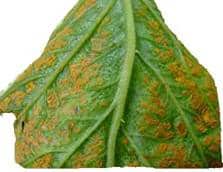
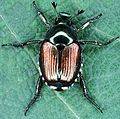
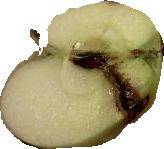

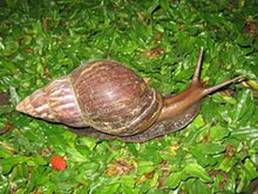
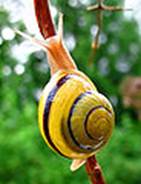
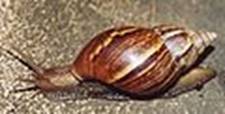
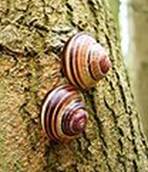
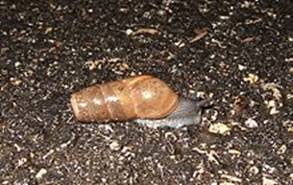


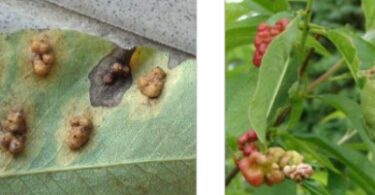
hello sir V.D. Kaviraj you done a great job in agro farming sir i want your book in hindi or english in india please guide me
Hi Shirish,
contact Nitin Gupta in Ambala Cantt. He has books.
Here is his email:
nitin gupta ;
SIR
HAPPY NEW YEAR.I AM VERY HAPPY THAT YOU ARE DOING WELL IN AGRO HOMEOPATHY.I AM INTERESTED IN YOUR BOOK.PL SEND DETAILS ADDRESS OF NITIN GUPTA OF AMBALA,INDIA.
REGARDS
BANSIDHAR SAHU
MOB-919777257278